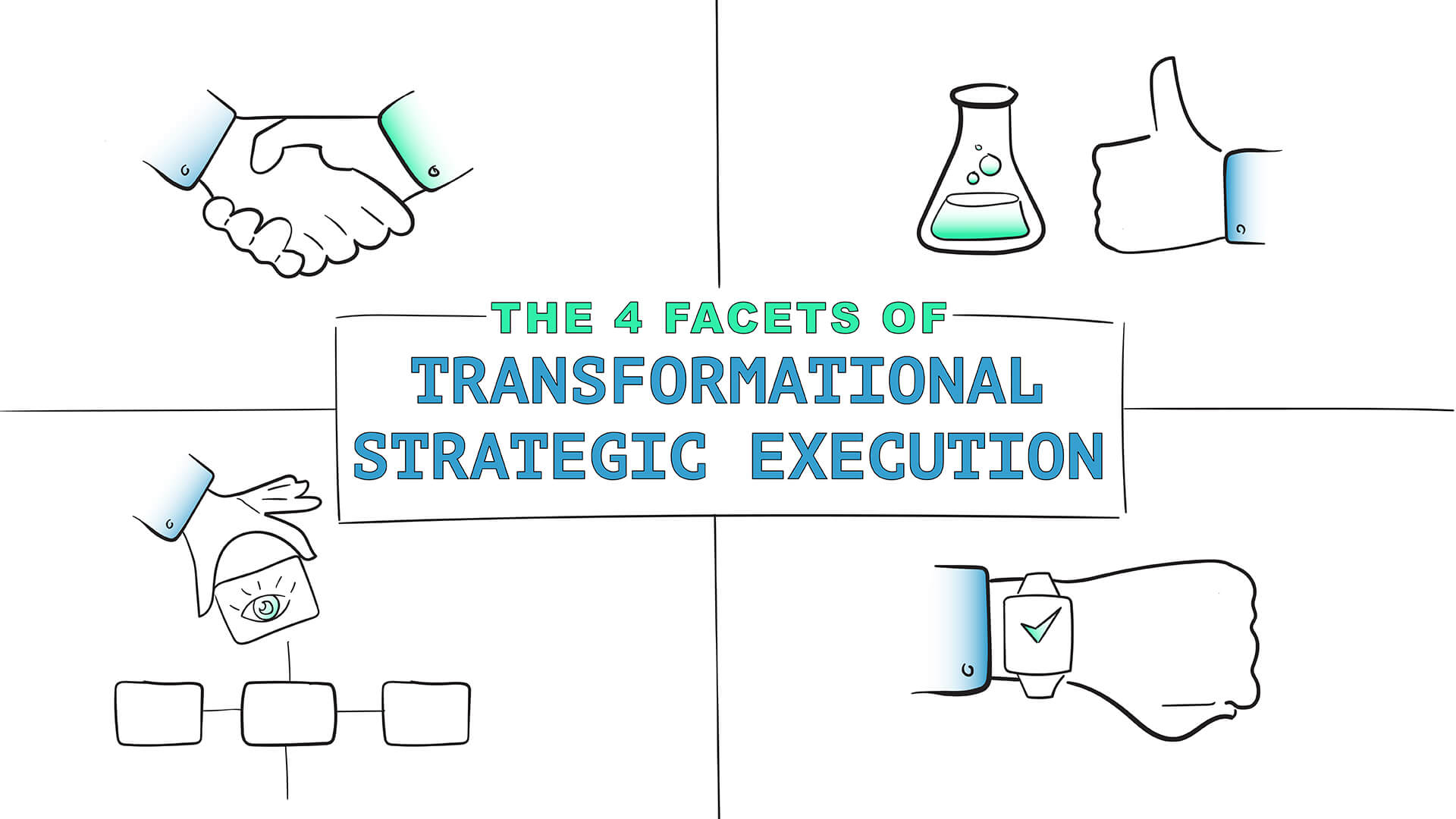The 4 Facets Of Transformational Strategic Execution
For the last few months my blog series has been discussing strategy over the decades. Through the years numerous strategic practices and methodologies have come and gone, but there are also those that have stood the test of time and morphed into newer ideas still in practice today.
At StrategyBlocks we have recognized the significance of transformational leadership and believe strongly that this style of leadership will have an important bearing on how organizations operationalize their strategic vision in the future.
What is Transformational Leadership?
Transformational Leadership is a method of management that views leaders as agents of change. It is important to not think of the word ‘leadership’ in a classical context, it is not only those people sitting around the boardroom table. A leader is not a title — it is an attitude. Leaders have a vision, an idea that they believe in, and they gather a team that strives for that vision together, delivering a positive change for the future. That idea could be anything from a vision statement, a departmental plan, a project or an action.
What is Transformational Strategic Execution?
So how does a transformational way of thinking affect the strategic vision of any organization? There are 4 key facets of transformational leadership which directly translate into strategic execution:
Building Commitment
Operationalizing a strategic idea requires team commitment. Back in the 1990’s I discussed the emergence of self-directed teams. Self directed teams give an organization agility and provide team members with a strong sense of purpose and trust. When implementing strategy, it is important to encourage practices that result in proactive behavior. Job autonomy, participation in decision making, and teamwork are particularly useful to develop a ‘change oriented” mindset.
Experimentation Is A Good Thing
Successful strategic execution is equivalent to successful change management, and having a change oriented mindset means having members of your team comfortable with questioning the status quo. It is important to create an environment in which people can grow and challenge traditional norms. From the 2000’s we saw the emergence of the Learning Organization and listed Peter Senge’s 5 attributes of a Learning Organization: systems thinking, personal mastery, adapting mental models, maintaining a common vision, and recognizing the criticality of teams. Transformational strategy must embrace the learning organization.
Create A Model Of Vision
When we create, share, and communicate our ideas we have started the journey of operationalizing strategic thinking. In doing so it makes it real, legitimate, and presents a picture of ‘how we are going to get there” which builds trust across the enterprise. As John C. Maxwell famously said its “the law of the picture: people do what people see.” If there is no ambiguity between a leaders actions and their words, and the team can see a picture of the future, they will move forward together.
Time To Execute The Vision
Now we have a visual presentation of the future, we are building trust and empowering our people with a proactive practices. As a group of people there is transparency and we can see how we are moving forward, and we have not forgotten the agility of the 2010’s, where we have a change oriented mindset and teams are ready to experiment. The plan is dynamic, able to take advantage of transient short-term opportunities, and ideas are appearing at all levels of the strategic plan, all unified under a common vision of the future.
StrategyBlocks 2020
We have a huge year planned for StrategyBlocks in 2020, and we are actively discussing the ideas and concepts of what we are calling Transformational Strategic Execution. How we can deliver those ideas to our customers to further help them to operationalize their business strategy? Watch this space. Thank you for joining me on this decade-by-decade discussion, from the 1960’s Peter Drucker’s Management By Objectives to the future of Transformational Strategic Execution.




Leave A Comment